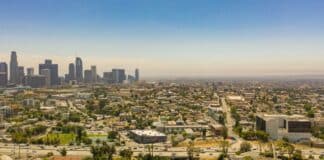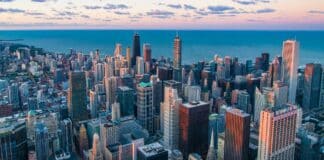Last week, Revolver highlighted the disturbing number of key figures in the January 6 Capitol incident who have gone unnamed and unindicted even as the number of criminal cases federal officials have brought spirals into the hundreds. Read it here if you’ve been living under a rock.
By now, it is a distinct possibility that many participants in the January 6 “riot” were associated with the government in some manner, be it as informants or full-blown agents.
America’s regime media is deeply committed to the narrative of January 6 as a planned “insurrection,” so they have flailed desperately to debunk reporting by Revolver as well as Fox’s “Tucker Carlson Tonight.” Twitter’s “neutral” “aggregators” made a cringeworthy clarification that only further bolstered Revolver’s claims.
Revolver will continue to report out the story of the Capitol incident and the federal government’s potential role in instigating it. But there is another reason to suspect federal involvement in January 6: The federal government has a decades-long history of this exact behavior. Revolver has already reported extensively on the phony “plot” against Gretchen Whitmer in Michigan, where five out of eighteen core plotters were actually connected to the federal government. But there are countless additional incidents, all over the country, stretching all the way back to the 1950s.
Now, for your edification, we would like to present five of the most egregious incidents of the federal government inciting the crimes it claims to be fighting.
The First World Trade Center Bombing
Thanks to 9/11, the 1993 attempt to blow up the World Trade Center is little-remembered today. However, at the time it was one of the most significant terror attacks in U.S. history, killing six people and injuring more than a thousand. If the bomb had succeeded in its intended purpose, toppling the North Tower into the South, it might have claimed tens of thousands of lives.
What is even less well-known, though, is that the bomb that nearly murdered tens of thousands was built with the help of an FBI informant. Egyptian immigrant Emad Salem was a part of Ramzi Yousef’s cell during the plotting of the attack. Salem, posing as an ex-Green Beret, was encouraged by the FBI to join the nascent New York Islamic extremist movement. Once Salem had penetrated the cell, instead of using him to thwart an attack, the FBI deliberately let the attack go forward.
Law-enforcement officials were told that terrorists were building a bomb that was eventually used to blow up the World Trade Center, and planned to thwart them by secretly substituting harmless powder for the explosives, an informer said after the blast.
The informer was to have helped the plotters build the bomb and supply the fake powder, but the plan was called off by an FBI supervisor who had other ideas about how the informer, Emad A. Salem, should be used, the informer said. [Baltimore Sun]
Salem didn’t just observe. According to secret tape recordings he made of his own conversations with the FBI, Salem actually helped build the bombs.
Speaking with the agent about his expenses last April, Salem says costs were pushed higher by the building of the trade center bomb.
Told that his expenses had been “a little out of the ordinary,” he replies in broken English: “I don’t think that because we was start already building the bomb, which is went off in the World Trade Center.”
He says the bomb was built “by supervision from the Bureau (Federal Bureau of Investigation) and the D.A. (district attorney).” “We know that the bomb start to be built. By who? By your confidential informant. What a wonderful great case.” [Tampa Bay Times]
A few months before the bombing, Salem suspended his undercover work. According to Salem, it was because he didn’t like the danger of wearing a wire. But in 1995, FBI officials said they stopped working with Salem because he repeatedly failed polygraph tests.
After the bombing, Salem said wanted to complain to the FBI’s senior leadership. He was told to keep quiet instead:
The transcript quotes Mr. Salem as saying that he wanted to complain to FBI headquarters in Washington about the bureau’s failure to stop the bombing, but was dissuaded by an agent identified as John Anticev.
“He said, I don’t think that the New York people would like the things out of the New York office to go to Washington, D.C.,” Mr. Salem said Mr. Anticev told him. [Baltimore Sun]
Instead, the FBI redeployed Salem as an intelligence asset, having him participate in a second plot to blow up additional targets in the New York City area.
But the FBI had Salem do more than observe. They encouraged him to actively fan the flames of extremism, ostensibly to get information.
By creating the so-called bootleg tapes, Mr. Salem has given ammunition to defense lawyers who argue that he entrapped the 15 defendants charged with conspiring to bomb New York City landmarks.
In one instance that shows how Mr. Salem was prompted by Federal agents, Mr. Anticev is quoted in the same NYT report from above as saying, “You know, pump, maybe kind of pump him up a little bit.” The agent tells Mr. Salem to stress “the loyalty to his cousin.” The target in that instance, Ibrahim A. Elgabrowny, is a cousin of the man who was charged with shooting Mr. Kahane and now a defendant in a plot to bomb New York City targets.
Salem positioned himself as a talented and enthusiastic extremist, who lured additional men into the plot. But Salem wasn’t just inciting violent extremism from others. He was also the key figure moving the plot along. He volunteered to build bombs, tested timing devices for them, and rented the group’s safe house where he was going to mix the explosives. Salem’s role in the plot was so central that arguably it simply would not have gotten off the ground without his involvement.
And Salem had a strong motive to inflate the plot as much as possible. When the plot was punctured and the participants (other than Salem) arrested, he was paid more than a million dollars for his work and subsequent testimony.
Garland, Texas shooting
The First Annual Muhammad Art Exhibit and Contest in Garland, Texas was one of the strangest moments in America’s long confrontation with Islamic terrorism. Elton Simpson and Nadir Hamid Soofi hoped to kill dozens of unbelievers and achieve a glorious martyrdom. Instead, they managed to kill only themselves, as they were both wounded by off-duty Garland police officer Gregory Stevens just seconds into their attack, before being finished off by SWAT officers.
The Garland attack was a macabre farce, but it easily could have been a horrifying massacre. Simpson and Soofi were both wearing body armor and were armed with six guns and more than 1,500 rounds of ammunition. And if innocents had been killed, it would have been entirely due to the actions of the FBI.
When Simpson and Soofi drove to the site of the attack, an FBI agent was in a car right behind them. That informant was dressed in Middle Eastern garb, and looked the part so well that local police nearly shot him in the mayhem. That informant also actively abetted the attack. Merely a week before the shooting, when Simpson shared a link about the upcoming cartoon contest, the agent replied by urging him to “tear up Texas.” Simpson replied by saying the agent didn’t have to be so overt about what was to be done.
After the attack, the FBI claimed that despite their agent being in direct contact with one of the shooters beforehand, the entire thing was a huge coincidence. The agent, they said, was at the Muhammad cartoon contest as part of another infiltration operation, and was surprised as anyone to see the other two attackers there (so surprised, apparently, that instead of trying to stop the attackers he simply fled the scene in a panic). The fact an FBI agent was in a car directly behind the attackers at the moment they arrived and started their attack was just a huge fluke worthy of a sitcom like Arrested Development.
Of course, if the agent’s presence really was innocent, it raises the question of why it was kept a secret from the public for fifteen months afterwards, and why the FBI has avoided full transparency in the matter to this day (even now, the agent’s name isn’t public).
“That morning, before one of those terrorists left and tried to commit mass murder, he exchanged 109 messages with an overseas terrorist,” Comey told the Senate committee. “We have no idea what he said, because those messages were encrypted.”
Comey didn’t offer more specifics, but he said the Garland incident was a prime example of the need for tech companies to alter the design of apps and devices so that the data is made accessible when public safety is at stake.
“Lots of good people have designed their systems and their devices so that judges’ orders cannot be complied with, for reasons that I understand,” Comey said in an apparent swipe at iPhone-maker Apple. “I’m not questioning their motivations. The question we have to ask is, ‘Should they change their business model?’” [NBC News]






